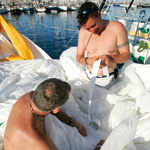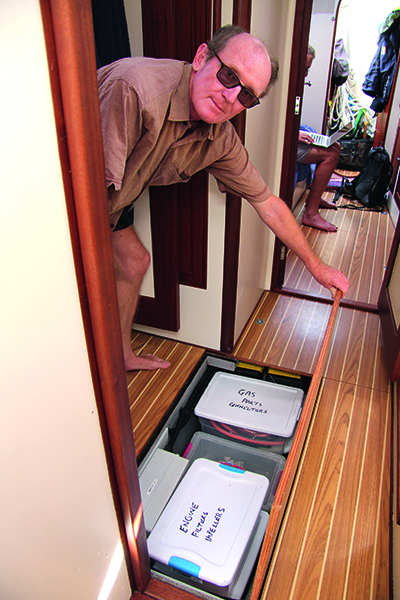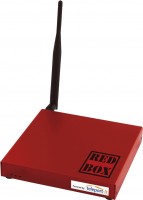30 expert tips for crossing the Atlantic: 11-15
11. Chafe is the enemy
Chafe is the enemy during long periods of downwind sailing. “Identify chafe points which are usually on sheet runs, at the top of the halyard and through the spinnaker pole,” advises Dan Bower. “Protect them as necessary; halyards should be moved every few days.”

On this jury-rigged a whisker pole, note the block on the end to ease chafe on the genoa sheet.
12. A stitch in time saves nine
Obvious as it sounds, you’d be surprised how many crews don’t give their sails a thorough inspection before the crossing. “Pay as much attention to your sails as to the rest of your rig and get suspect areas sorted before you head off,” says Mike Kopman. “Blowing out a clew ring for example could mean the loss of that sail, a major setback if all you’ve got is a furling headsail and a storm jib.

“Take lots of sticky-back, spare sail cloth, twine and more needles than you think you’ll ever need. Also, carry some spare batten stock (with at least one piece as long as your longest batten). Store it in the boom if you can, and forget about it until you need it.”
13. Beware the 11th hour glitch
One of the chief sources of equipment problems, failures and hassles is from fitting new equipment late. We see this in our Great Atlantic Gear Test each year and Jeremy Wyatt of World Cruising confirms it. “Take the time to test it and be sure it’s working. Then you won’t get caught with the knock-on effects – for example gear that uses more electrical power then you thought, so you find your charging system is not up to it.”

14. Take a good inventory of spares and tools
This is a big topic, but the bottom line is: carry whatever you can. “Start with the basics like filters, fan belts and impellers, but whatever else you can carry will never be wasted,” says Mike Kopman. “Take a replacement water pump, a spare injector or two; there will come a time when you need it. And don’t forget spares for rigging.”

Keep expensive parts covered with a film of oil and wrap them in cling wrap, or, better still, vacuum bag them.
15. Work out your communications needs
“What comms gear do I need?” is one of the most commonly asked question by ARC skippers, says Jeremy Wyatt. His advice is based on the sort of cruising people are planning to do after the Atlantic crossing.

If you’re sailing transatlantic and spending some time in the Caribbean before returning home, an Iridium phone is probably the right choice, he says. You avoid the expense of SSB radio, but can keep in touch with the shore, get e-mail, etc. The costs of Iridium phones have come down and it’s possible to get a second-hand one for under £1,000 and resell it afterwards.
However, if you are planning to keep on cruising and will be living aboard, give serious thought to fitting an SSB radio. That will let you communicate with other boats, join cruising nets and take part in the social side of cruising. Among crews taking part in the ARC, around 60 per cent have SSB radio, says Wyatt and of those, 80 per cent also have satcom.




